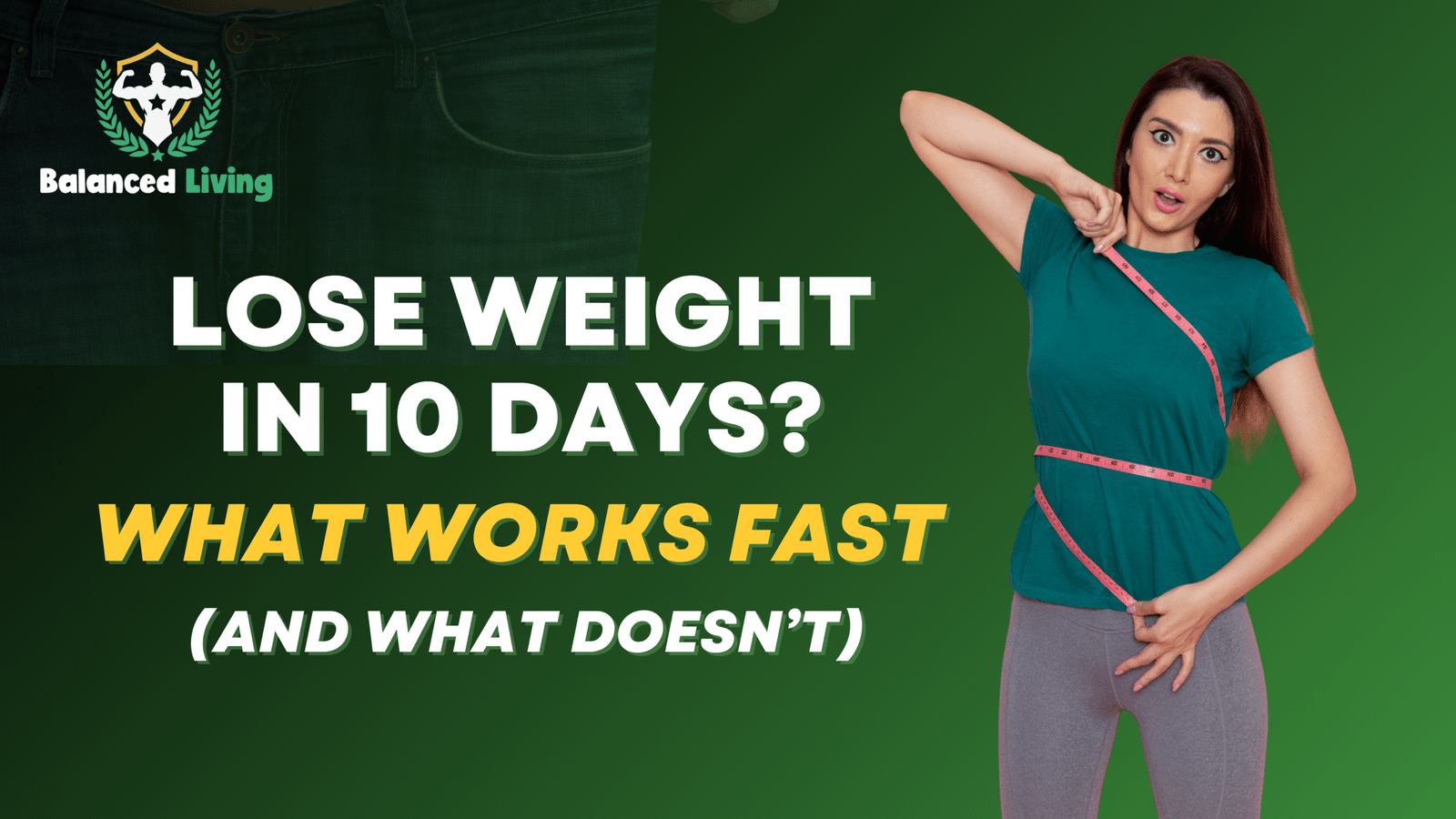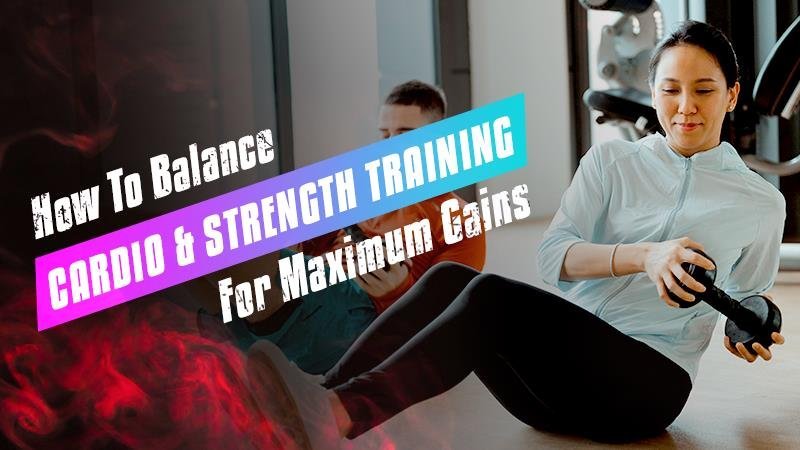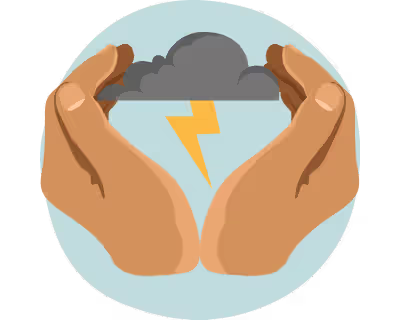
Your jeans feel tighter and you want results fast. You can lose weight fast in 10 days, but dropping a lot that quickly is rarely safe or easy to keep.
This guide cuts myths, explains real tactics like a high protein diet for quick weight loss, and shows what to try for a 10-day weight loss challenge.
Curious which workouts work, which foods help you lose belly fat in 10 days, and which diets are all hype? Keep going; your straight, no-spin plan starts now.
Effective Strategies to Lose Weight in 10 Days
You want fast progress without misery. Lock in a simple plan, move daily, and stack habits that reduce calories without leaving you weak or moody.
Intermittent Fasting
Intermittent fasting often means time-restricted eating, eating within an eight-hour window and fasting the rest. Some people pair time-restricted eating with walking four miles a day and 30 minutes of cardio, then see a quick drop on the scale.
This pattern may reduce appetite by shifting hunger hormones, help you burn more calories, and make it easier to keep a low-calorie diet. It works best when meals center on whole grains, lean meat, vegetables, and fiber-rich snacks.
For others, smaller meals spread through the day feel steadier. Regular meal timing can support insulin control better than fasting all day, which matters for energy and mood.
Don’t let hunger boss you around. That reader tip still holds. Focus on what to eat to lose weight in 10 days, like simple healthy foods, not sugar-heavy drinks or fad diets that fade fast.
Creating a Calorie Deficit
Fat loss needs a calorie deficit, you must burn more than you eat. A steady target is a 500 calorie gap per day, which helps most people lose about one pound a week. Do not drop below 1,200 calories a day for women or 1,500 for men unless a clinician is supervising you.
Estimate maintenance by multiplying your weight in pounds by 15, then subtract 500. Track intake with a food diary or an app. Small swaps add up, like whole wheat instead of white bread, fewer added sugars, and more vegetables.
Keep added sugar under about six teaspoons, 25 grams, per day for women and nine teaspoons, 36 grams, for men. Aim for less than 2,300 milligrams of sodium to reduce water retention. That way the scale reflects fat loss, not swelling from salt.
Choose filling foods. Meals high in fiber improve satiety, which helps you stick to your plan during a fast-start period.
High-Intensity Interval Training (HIIT)
Once you set your calorie deficit, HIIT can speed the burn. HIIT is short bursts of hard effort followed by easy effort or rest. Try 60 to 90 second surges every five minutes during a jog or cycle session.
Bodyweight cardio drills work too. Mix cross jacks, wall slides, bear crawls, single-leg balance drills, lunge to push-up sets, or pendulum swings.
Target at least 75 minutes of vigorous exercise each week. The American Heart Association supports that goal for adults. Eat enough to fuel training; slashing calories too hard tanks energy and progress. Include core work so your midsection gets stronger while overall fat drops.
Push yourself, but keep form clean. Progress comes from consistency, not one hero workout.
Eating Protein-Rich and Fiber-Dense Foods
Hard sessions spark hunger, so your 10-day meal plan must satisfy. Fill your plate with lean protein, like eggs, chicken, fish, and beans. Aim for about 1.6 grams of protein per kilogram of body weight. Research suggests this supports greater fat loss and muscle retention while dieting.
Get at least 25 grams of fiber a day. Whole grains, lentils, apples, and broccoli help you stay full, ease digestion, and tame blood sugar swings. That makes evening cravings far less dramatic.
Limit junk foods heavy in salt and hidden sugars. Check labels for sodium. These choices help cut calories and keep key nutrients coming in during a rapid phase.
Protein fills the tank, fiber keeps it running steady, all day long.
Common Mistakes to Avoid
Many people trip on the same hurdles. Skipping real meals, using only shakes, or trying to cut carbs to lose weight fast often backfires.
Overly Restrictive Diets
Very low calorie diets, like 800 calories a day, sound bold but often stall progress. Your metabolism may slow and hunger hormones can surge, so cravings hit hard at night and self-control drops.
Going under 1,200 calories for women or 1,500 for men is risky without medical oversight. The body reacts by holding fat, burning muscle, and lowering energy output.
Cutting entire food groups, like all carbohydrates, might trigger fast water loss in a few days. Then come headaches, fatigue, and poor workouts. Muscle loss becomes more likely when key nutrients disappear. Many people rebound and regain weight as soon as they return to normal breakfasts and dinners.
Balanced eating beats extremes. Skip detox for 10 days fads that drain willpower more than fat.
Skipping Meals
Skipping meals seems efficient, yet it often sparks overeating later. Hunger rises, fullness drops, and willpower takes a hit.
Say you skip breakfast. By lunch, energy crashes and mood sours, and the plan for a salad turns into a burger and fries. Regular meal timing supports metabolism and a safe calorie deficit.
People doing a 10-day diet plan for weight loss usually do better with small, frequent meals than with skipping. Eating before exercise keeps blood sugar steady for walking or HIIT. That makes workouts feel doable, not dreadful.
If fast weight loss is your goal, structure beats guesswork. Keep meals consistent and simple.
Relying on Fad Diets
Fad diets may peel off pounds, but much of it is water and muscle, not stubborn abdominal fat. Weight tends to roar back once normal eating resumes.
Trendy plans often slash calories to extremes or cut whole food groups without solid science. They can miss essential vitamins and minerals your body needs for energy and disease prevention. You might feel lightheaded, weak, or put your heart at risk.
Plenty of real people, like Tracey Wood, lost big numbers by pairing regular exercise with steady healthy eating, not viral smoothie “cleanses.” Pros agree that healthy eating habits plus consistent activity beat any alternate day fasting stunt or miracle shake.
Skip quick fixes. Next up, see what rapid loss actually does inside your body.
Does Rapid Weight Loss Work?
Rapid loss sounds exciting, but bodies fight back. Dr. Marcio Griebeler notes that many people who drop weight fast gain it back. Your system may slow metabolism and alter hormones like leptin and GLP-1, which help control hunger and fullness.
Slash calories too hard, and you will likely lose water and muscle before fat. That leaves you tired, hungrier, and frustrated.
Can you lose 10 pounds in 10 days? Usually that number reflects water loss as glycogen, your stored carbohydrate, breaks down. Even with strong exercise to lose weight in 10 days, safe loss often lands at one to three pounds.
People with obesity or conditions such as diabetes sometimes need medical care or medications. Short swings on the scale can be fluid, not fat. Chasing quick fixes can invite nutrient gaps or anxiety, which delays real progress.
If long-term success is the goal, slow, repeatable habits work best.
Conclusion
Wanting to drop scale numbers in 10 days is common. With smart planning, you may lose a few pounds fast, but keeping it off takes more time and patience.
Use simple tools, like intermittent fasting if it suits you, a modest calorie deficit, and a 10-day workout plan that you can actually finish. Eat more protein and fiber, move daily, and choose water or smoothies over soda. Your gut’s good bacteria, the microbes that aid digestion, will thank you.
Fast loss often fades. The better path is learning how to lose weight quickly but safely. Keep a short food journal, even a notes app, to track what works. Aim for seven to nine hours of sleep, lower stress, and swap high glycemic foods for whole grains, beans, nuts, and vegetables. Try a few vegetarian dinners each week.
If the scale barely moves, do not panic. Progress is still happening with steadier energy, better appetite control, and smaller waist measurements. Keep going past 10 days and celebrate small wins as habits click.
This content is general education, not medical advice. If you have a health condition, are pregnant, or have a history of eating disorders, speak with a healthcare professional or a registered dietitian before major changes to your diet or training.
Frequently Asked Questions (FAQ)
Dropping ten pounds in ten days sounds tempting, but it’s not typical for most people. Extreme caloric restriction or very low-calorie diets (VLCDs) might make the scale drop fast, but much of that loss comes from water and muscle, not fat. Quick fixes can backfire; they often lead to weight regain once normal eating resumes.
Rapid weight loss isn’t always safe, especially if you’re overweight with underlying health issues like cardiovascular disease or risk factors tied to obesity treatment. Fast drops can trigger eating disorders or mess with your body’s good bacteria balance and energy expenditure. Always talk to a doctor before trying drastic changes.
Sleep plays a big role when you want to lose weight quickly but safely. Poor sleep throws off hormones like peptide YY that control hunger and fullness; this makes sticking to any diet harder than wrestling an octopus on roller skates! Better rest helps regulate appetite and supports healthy metabolism during short-term efforts.
Smoothies can be part of a smart plan if packed with fiber from fruits, veggies, or even fiber supplements instead of sugary beverages common in the Western diet. They help keep you full longer by slowing absorption and lowering glycemic index spikes; just watch out for hidden calories that sneak up faster than socks disappear in the laundry!
Vegetarian and vegan plans may support rapid progress since they focus on plant-based foods rich in fibre and polyunsaturated fats while cutting down on processed junk found in many health food aisles today. These diets also encourage more probiotics which boost gut health—key for long-term maintenance after those first ten days pass.
Weight-loss surgery is usually reserved as preventive services only when other methods fail due to high cardiovascular risk linked with obesity treatment needs—not something most folks need right away! Self-talk matters too; positive thinking keeps motivation strong through tough cravings at midnight snack time! Still, nothing beats steady dietary changes focused on low-glycemic choices plus regular movement if lasting success is your goal rather than chasing quick wins that vanish overnight like morning fog over a lake.
















